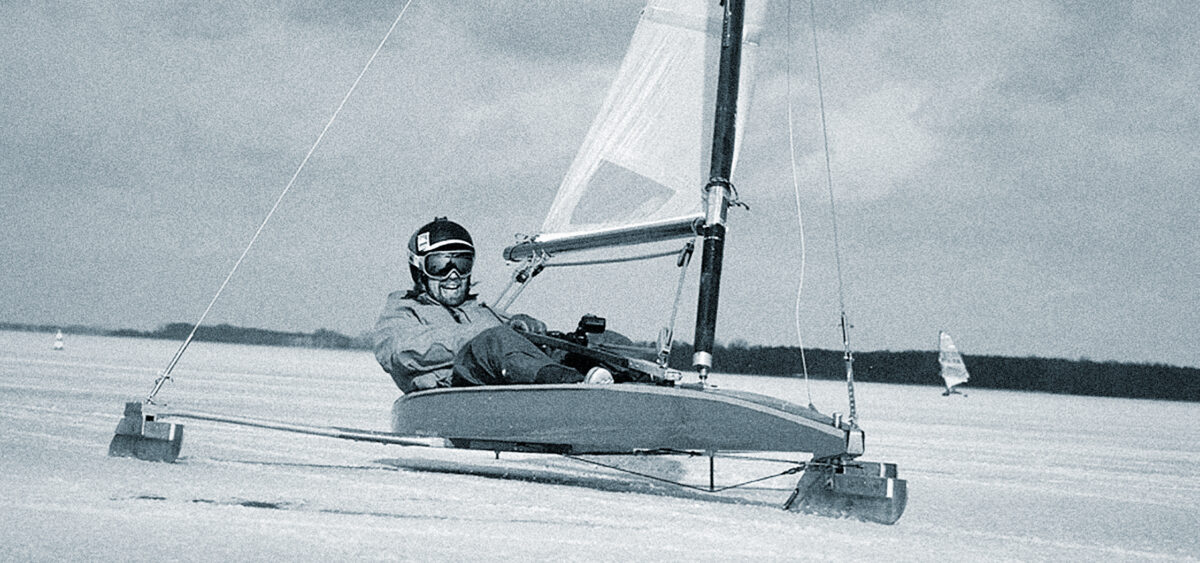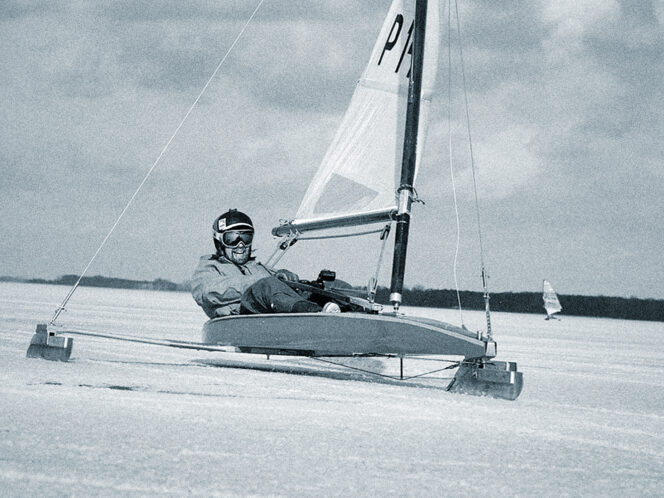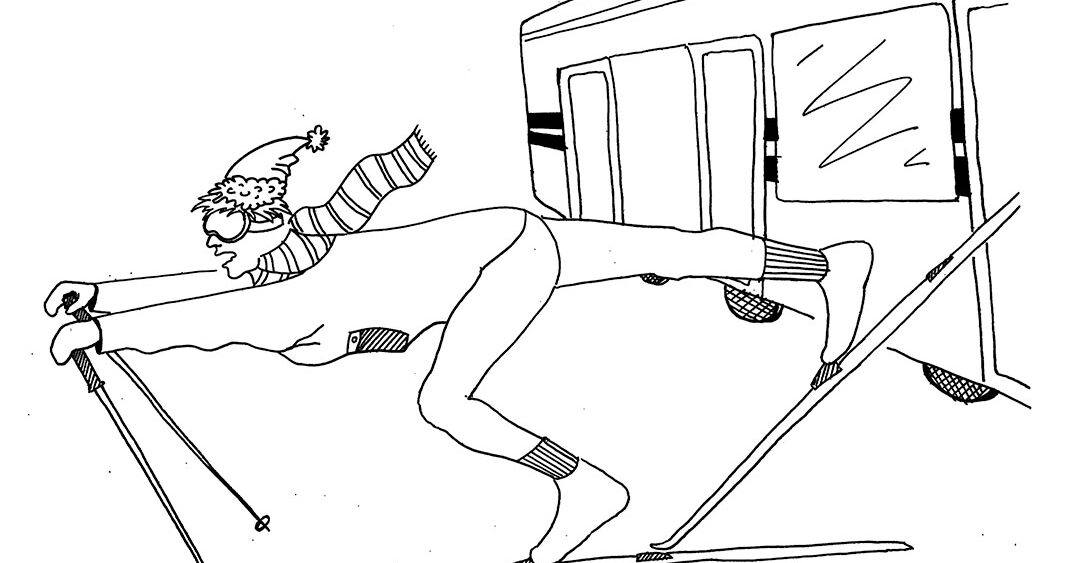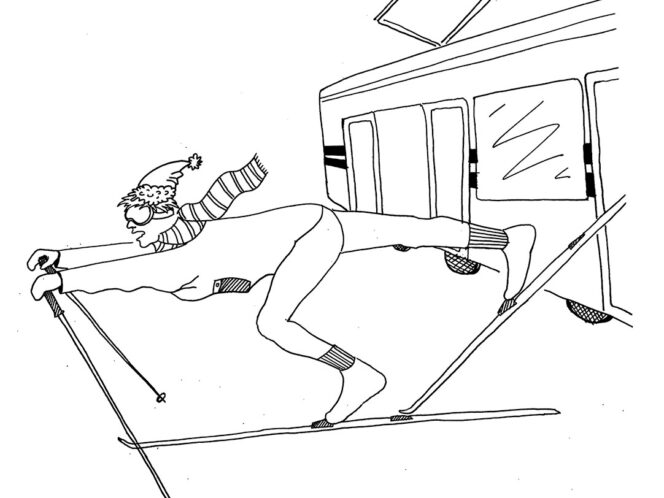
Once upon a time we used to have real winters – in the 20th century, the lakes of the Masuria region of north-east Poland would be frozen solid from November to April. You could cross the thick ice floors on horse-drawn sleighs, while fishermen used axes to cut holes in the ice the size of their country houses. Every once in a while, you would see the white sails of special ice yachts upon the frozen water.
During the period between the two World Wars, the village of Ogonki – set upon Lake Święcajty (when it was called Schwenten) – was the European capital of ice sailing. During the international regattas held there in the 1930s, almost 120 vessels would come out to perform. Archive footage has survived from those times, a film called Tanzende Kufen [Dancing Sleighs] showing just how popular and highly developed the sport of ice sailing had








